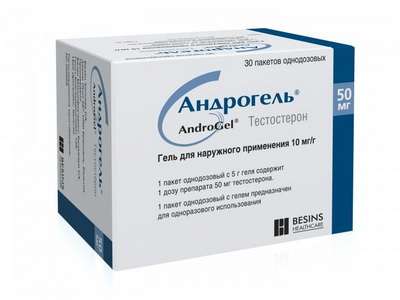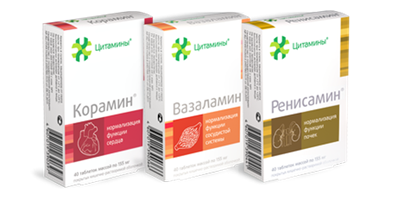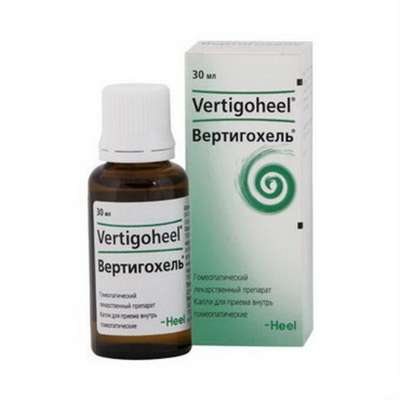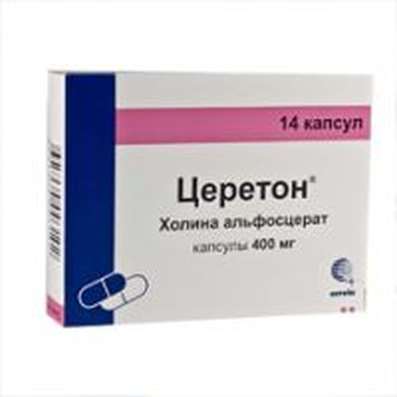Instruction for use: Madopar HBS 125
I want this, give me price
Dosage form: capsules
Active substance: Levodopa + Benserazide*
ATX
N04BA Dopa and its derivatives
Pharmacological groups:
Dopaminomimetics in combination
Anti-Parkinsonics (dopamine precursor + decarboxylase peripheral inhibitor) [Antiparkinsonics in combinations]
The nosological classification (ICD-10)
G20 Parkinson's disease: A trembling paralysis; Idiopathic Parkinsonism; Parkinson's disease; Symptomatic Parkinsonism
G21 Secondary Parkinsonism: Medicinal Parkinsonism; Parkinsonism; Parkinsonism symptomatic; Disorders of extrapyramidal system; Parkinson's Syndrome
Composition and release form
Madopar high-speed tablets (dispersible) "125"
Tablets are dispersible 1 tab.
Levodopa 100 mg
Benserazide 25 mg
(In the form of benserazide hydrochloride - 28.5 mg)
Auxiliary substances: citric anhydrous acid; Starch corn pregelatinized; MCC; Magnesium stearate
In vials of dark glass 30 or 100 pcs .; In a pack of cardboard 1 bottle.
Madopar 125
Capsules 1 caps.
Levodopa 100 mg
Benserazide 25 mg
(In the form of benserazide hydrochloride - 28.5 mg)
Auxiliary substances: MCC; talc; Povidone; Magnesium stearate
Shell: cap capsule - dye indigo carmine; Titanium dioxide; gelatin; Capsule body - iron dye oxide red; Titanium dioxide; gelatin
In vials of dark glass 30 or 100 pcs .; In a pack of cardboard 1 bottle.
Madopar 250
Tablets 1 table.
Levodopa 200 mg
Benserazide 50 mg
(In the form of benserazide hydrochloride - 57 mg)
Auxiliary substances: mannitol; Calcium hydrophosphate; MCC; Starch corn pregelatinized; Crospovidone; Ethylcellulose; Iron dye oxide red; Silicon dioxide colloid (anhydrous); Sodium docusate; Magnesium stearate
In vials of dark glass 30 or 100 pcs .; In a pack of cardboard 1 bottle.
Madopar GSS "125"
Capsules GSS (hydrodynamically balanced system) 1 caps.
Levodopa 100 mg
Benserazide 25 mg
(In the form of benserazide hydrochloride - 28.5 mg)
Auxiliary substances: hypromellose; Vegetable hydrogenated oil; Calcium hydrophosphate; Mannitol; Povidone; talc; Magnesium stearate
Shell: cap capsule - dyes indigo carmine and iron oxide yellow; Titanium dioxide; gelatin; Capsule body - indigo carmine dye; Titanium dioxide; gelatin
In vials of dark glass 30 or 100 pcs .; In a pack of cardboard 1 bottle.
Description of dosage form
Tablets are dispersible: cylindrical, flat on both sides with a bevelled edge, white or almost white, odorless or slightly odorless, slightly marble, engraved with "ROCHE 125" on one side of the tablet and a fault line on the other side. The diameter of the tablet is about 11 mm; The thickness is about 4.2 mm.
Capsules: hard gelatin; Body - pinkish-flesh colored, opaque; Lid - light blue, opaque; On the capsule there is a marking «ROCHE» of black color. The contents of the capsules are a fine granular powder, sometimes crumpled, of a light beige color, with a subtle smell.
Tablets: cylindrical, flat with a bevelled edge, pale red with small patches, with a barely perceptible odor; On one side of the tablet crosswise risk, engraving "ROCHE" and hexagon; On the other - a cruciform risk. The diameter of the tablet is 12.6-13.4 mm; Thickness - 3-4 mm.
Capsules with modified release: hard gelatin; Body - light blue, opaque; Lid - dark green, opaque; On the capsule there is a marking «ROCHE» inks of rusty-red color. The contents of the capsules are a fine granular powder, sometimes crumpled, white or slightly yellowish with a subtle smell.
Pharmachologic effect
Mode of action - Antiparkinsonian.
Pharmacodynamics
Combined remedy for Parkinson's disease and restless legs syndrome.
Parkinson's disease. Dopamine, which is a neurotransmitter in the brain, is formed in the basal ganglia in patients with Parkinsonism in insufficient quantities. Levodopa or L-DOPA (3,4-dihydrophenylalanine) is a metabolic precursor of dopamine. Unlike dopamine, levodopa penetrates well through the BBB. After levodopa penetrates into the central nervous system, it is converted to dopamine by decarboxylase of aromatic amino acids.
Substitution therapy is carried out by the administration of levodopa, a direct metabolic precursor of dopamine, since the latter does not penetrate well through the BBB.
After ingestion, levodopa is rapidly decarboxylated into dopamine in both cerebral and extracerebral tissues. As a result, most of the introduced levodopa does not reach the basal ganglia, and peripheral dopamine often causes side effects. Therefore, it is necessary to block extracerebral decarboxylation of levodopa. This is achieved by the simultaneous administration of levodopa and benserazide, an inhibitor of peripheral decarboxylase.
Madopar® is a combination of these substances in an optimal ratio of 4: 1 and has the same efficacy as a large dose of levodopa.
Syndrome of "restless legs". The exact mechanism of action is unknown, but the dopaminergic system plays an important role in the pathogenesis of this syndrome.
Pharmacokinetics
Suction
Madopar® 125 capsules and Madopar® 250 tablets
Levodopa is mainly absorbed in the upper parts of the small intestine. Time to achieve Cmax levodopa - 1 hour after taking capsules or tablets.
Capsules and tablets are bioequivalent.
Cmax levodopa in plasma and the degree of absorption of levodopa (AUC) increase in proportion to the dose (in the dose range of levodopa from 50 to 200 mg).
Eating food reduces the rate and degree of absorption of levodopa. When prescribing capsules or tablets after meals, Cmax levodopa in plasma decreases by 30% and is reached later. The degree of absorption of levodopa decreases by 15%. Absolute bioavailability of levodopa in Madopar® 125 capsules and Madopar® 250 tablets is 98% (74 to 112%).
Madopar ® high-speed tablets (dispersible) "125"
Pharmacokinetic profiles of levodopa after the administration of dispersible tablets are similar to those after taking Madopar® 125 capsules or Madopar® 250 tablets, but the time to achieve Cmax tends to decrease. The absorption parameters of dispersible tablets in patients are less variable.
Madopar® GSS "125", capsules with modified release of active substance
Madopar® SCC "125" has other pharmacokinetic properties than the above-mentioned release forms. Active substances are released slowly in the stomach. Cmax in plasma is 20-30% less than in conventional dosage forms, and is achieved 3 hours after administration. The plasma concentration dynamics is characterized by a longer half-life (the time span in which the plasma concentration is greater than or equal to half the maximum) than Madopar® 125 capsules and Madopar® 250 tablets, indicating continuous modifiable release . The bioavailability of the Madopar® GSS 125 preparation is 50-70% of the bioavailability of Madopar® 125 capsules and Madopar® 250 tablets and is not dependent on food intake. The intake of food does not affect the Cmax of levodopa, which is reached later, 5 hours after taking Madopar® SCC "125".
Distribution
Levodopa passes through the BBB through a saturated transport system. It does not bind to plasma proteins. The volume of distribution is 57 liters. AUC for levodopa in the cerebrospinal fluid is 12% of that in plasma.
Benserazid in therapeutic doses does not penetrate the BBB. It accumulates mainly in the kidneys, lungs, small intestine and liver.
Metabolism
Levodopa is metabolized by two major (decarboxylation and o-methylation) and two additional routes (transamination and oxidation).
Decarboxylase of aromatic amino acids converts levodopa into dopamine. The main end products of this metabolism pathway are homovaniline and dihydroxyphenylacetic acids.
Catechol-o-methyl transferase methylates levodopa to form 3-o-methyldopa. T1 / 2 of this main metabolite from plasma is 15-17 hours, and in patients taking therapeutic doses of Madopar®, accumulation takes place.
Decreased peripheral decarboxylation of levodopa when co-administered with benserazide results in higher plasma concentrations of levodopa and 3-o-methyldopa and lower plasma concentrations of catecholamines (dopamine, noradrenaline) and phenol carboxylic acids (homovanilic acid, dihydrophenylacetic acid).
In the intestinal mucosa and liver, benserazide is hydroxylated to form trihydroxybenzylhydrazine. This metabolite is a potent inhibitor of aromatic amino acid decarboxylase.
Excretion
With peripheral inhibition of T1 / 2 decarboxylase, levodopa is 1.5 hours. The clearance of levodopa from plasma is approximately 430 ml / min.
Benserazide is almost completely eliminated by metabolism. Metabolites are excreted mainly in urine (64%) and to a lesser extent with feces (24%).
Pharmacokinetics in specific patient groups
Patients with renal and hepatic insufficiency. Data on the pharmacokinetics of levodopa in patients with renal and hepatic insufficiency are absent.
Patients of senile age (65-78 years). In patients of senile age (65-78 years) with Parkinson T1 / 2 and AUC, levodopa increases by 25%, which is not clinically significant and does not affect the dosing regimen.
Indications Madopar HBS 125
Parkinson's disease:
- Madopar® high-speed tablets (dispersible) "125" - a special dosage form for patients with dysphagia and akinesia in the early morning hours and in the afternoon, or in the phenomena of "depletion of the single dose effect" or "increase in the latency period before the clinical effect of the drug »;
- Madopar® SCC "125" is indicated for all types of fluctuations in the action of levodopa (namely: "dyskinesia peak dose" and "end-of-dose phenomenon," for example, immobility at night);
Syndrome of restless legs, including idiopathic syndrome and restless legs syndrome in patients with chronic renal failure who are on dialysis.
Contraindications
Hypersensitivity to levodopa, benserazide or any other component of the drug;
Decompensated violations of endocrine organs, liver or kidney function (except for patients with the syndrome of restless legs receiving dialysis);
Diseases of the cardiovascular system in the stage of decompensation;
Mental illness with a psychotic component;
Angle-closure glaucoma;
In combination with nonselective MAO inhibitors or a combination of MAO-A and MAO-B inhibitors;
Age younger than 25 years;
pregnancy;
The period of breastfeeding;
Women of childbearing age who do not use reliable methods of contraception (see "Pregnancy and the period of breastfeeding").
Application in pregnancy and breastfeeding
Madopar® is absolutely contraindicated in pregnancy and in women of childbearing age who do not use reliable methods of contraception, because of the possible disruption of the development of the skeleton in the fetus.
If pregnancy occurs on the background of treatment, the drug should be discontinued in accordance with the recommendations of the attending physician.
If you need to take Medopar® during breastfeeding, stop breastfeeding, due to the lack of reliable data on the penetration of benserazide into breast milk. It is impossible to exclude the danger of incorrect development of the skeleton in the newborn.
Side effects
On the part of the blood system: rare cases of hemolytic anemia, transient leukopenia, thrombocytopenia. In patients taking long-term levodopa, it is recommended to periodically monitor the blood formula, the function of the liver and kidneys.
From the gastrointestinal tract: anorexia, nausea, vomiting, diarrhea, individual cases of loss or changes in taste, dryness of the oral mucosa.
From the skin: rarely - itching, rash.
From the side of the cardiovascular system: arrhythmias, orthostatic hypotension (weakening after reduction of Madopar® dose), arterial hypertension.
From the side of the nervous system and the psychic sphere: agitation, anxiety, insomnia, hallucinations, delirium, temporary disorientation (especially in elderly patients and patients who had these symptoms in history), depression, headache, dizziness, in later stages of treatment - spontaneous movements (such as chorea or athetosis), episodes of "hardening", weakening of the effect by the end of the period of the action of the dose (the phenomenon of "exhaustion"), the phenomenon of "on-off", pronounced drowsiness, episodes of sudden drowsiness, Appearance of the syndrome of restless legs.
On the part of the body as a whole: febrile infection, rhinitis, bronchitis.
Laboratory indicators: sometimes transient increase in liver transaminases and alkaline phosphatase activity, increase of blood urea nitrogen, change of urine color to red, darkening on standing.
Interaction
Pharmacokinetic interaction
Trihexyphenidyl (anticholinergic drug) reduces the rate, but not the degree of absorption of levodopa. The administration of trihexyphenidyl along with Madopar® GSA "125" does not affect other parameters of the pharmacokinetics of levodopa.
Antacids reduce the degree of absorption of levodopa by 32% when administered with Madopar® GSS "125".
Iron sulfate reduces Cmax and AUC of levodopa in plasma by 30-50%, which is a clinically significant change in some patients.
Metoclopramide increases the rate of absorption of levodopa.
Levodopa does not enter into pharmacokinetic interaction with bromocriptine, amantadine, selegiline and domperidone.
Pharmacodynamic interaction
Neuroleptics, opiates and antihypertensive drugs containing reserpine inhibit the action of Madopar®.
MAO inhibitors. If Madopar® is prescribed to patients receiving irreversible non-selective MAO inhibitors, then at least 2 weeks should elapse from discontinuing the use of the MAO inhibitor before starting Madopar® (see Contraindications). However, selective MAO-B inhibitors (such as selegiline or rasagiline) and selective MAO-A inhibitors (such as moclobemide) can be administered to patients receiving Madopar®. It is recommended that the dose of levodopa be adjusted depending on the individual patient's need for efficacy and tolerability. The combination of MAO-A and MAO-B inhibitors is equivalent to the use of a non-selective MAO inhibitor, so a similar combination should not be administered concomitantly with Madopar®.
Sympathomimetics (adrenaline, norepinephrine, isoproterenol, amphetamine). Madopar® should not be given concomitantly with sympathomimetics, since levodopa can potentiate their action. If simultaneous reception is still necessary, careful monitoring of the state of the cardiovascular system is very important and, if necessary, a reduction in the dose of sympathomimetics.
Antiparkinsonian means. Perhaps the combined use of the drug with other antiparkinsonian drugs (anticholinergic, amantadine, dopamine agonists), but this can enhance not only desirable, but also undesirable effects. You may need to reduce the dose of Madopar® or another drug. If a catechol-o-methyltransferase inhibitor (COMT) is added to the treatment, a dose reduction of Madopar® may be required. At the beginning of Madopar® therapy, anticholinergic drugs should not be abruptly abolished, since levodopa does not start immediately.
Levodopa can affect the results of laboratory determination of catecholamines, creatinine, uric acid and glucose, a false positive result of Coombs test is possible.
In patients receiving Madopar®, taking the drug concomitantly with protein-rich foods may interfere with the absorption of levodopa from the digestive tract.
General anesthesia with halothane. Reception Madhopara® should be canceled for 12-48 h before an operative intervention as at the patient receiving Madopar®, during halotane anesthesia fluctuations of a BP and an arrhythmia can arise.
Dosing and Administration
Inside, not less than 30 minutes before or 1 hour after meals.
Capsules (Madopar® "125" or Madopar® SCC "125") should be swallowed whole without chewing. Capsules Madopar® SCC "125" can not be opened before use, otherwise the effect of modified release of the active substance is lost.
Tablets (Madopar® "250") can be crushed to facilitate swallowing.
Tablets are dispersible (Madopar® high-speed tablets (dispersible) "125") must be dissolved in 1/4 cup of water (25-50 ml); The tablet completely dissolves after a few minutes with the formation of a milky white suspension, which should be taken no later than 30 minutes after dissolving the tablet. Since a precipitate can form quickly, it is recommended to mix the solution before taking it.
Parkinson's disease
Standard dosing regimen
Treatment should be started gradually, individually picking up the dose to the optimum effect.
Initial therapy
At an early stage of Parkinson's disease, it is recommended to begin treatment with Madopar® from taking 62.5 mg (50 mg of levodopa + 12.5 mg of benserazide) 3-4 times a day. If the initial dosage scheme is tolerated, the dose should be slowly increased depending on the patient's response.
The optimal effect is usually achieved with a daily dose of 300-800 mg of levodopa + 75-200 mg of benserazide taken in 3 or more doses. To achieve the optimal effect, it may take 4 to 6 weeks. If it is necessary to further increase the daily dose, this should be done at intervals of 1 month.
Supportive treatment
The average maintenance dose is 125 mg (100 mg of levodopa + 25 mg of benserazide) 3-6 times a day. The number of receptions (at least 3) and their distribution during the day should provide the optimum effect.
To optimize the effect, you can replace Madopar® 125 capsules and Madopar® 250 tablets with Madopar® high-speed tablets (dispersible) or Madopar® GCS 125 capsules.
Restless legs syndrome
The maximum allowable dose is 500 mg / day of Madopar® (400 mg of levodopa + 100 mg of benserazide). 1 hour before bedtime, with a small amount of food.
Idiopathic syndrome of "restless legs" with disturbed sleep
It is recommended that Madopar® 125 capsules or Madopar® 250 tablets be prescribed.
Initial dose: 62.5 mg (50 mg of levodopa + 12.5 mg of benserazide) -125 mg (100 mg of levodopa + 25 mg of benserazide) Madopar®. If the effect is insufficient, increase the dose to 250 mg (200 mg of levodopa + 50 mg of benserazide) Madopar®.
Idiopathic syndrome of "restless legs" with disturbed sleep and sleep
Initial dose: 1 caps. Madopar® GSS "125" and 1 caps. Madopar® 125 for 1 hour before bedtime. If the effect is insufficient, it is recommended to increase the dose of Madopar® GSS "125" to 250 mg (2 caps.).
Idiopathic syndrome of "restless legs" with disturbances of falling asleep and sleep, as well as with disturbances during the day
In addition: 1 tab. Dispersible or 1 caps. Madopar® "125", the maximum permissible daily dose is 500 mg (400 mg of levodopa + 100 mg of benserazide).
Syndrome of "restless legs" in patients with chronic renal failure receiving dialysis
125 mg Madopar® (1 table dispersible or 1 Madopar® 125 capsule) 30 minutes before the onset of dialysis.
Dosing in special cases
Parkinson's disease
Madopar® can be combined with other anti-Parkinsonian drugs, as the treatment continues, it may be necessary to reduce the dose of other drugs or to gradually eliminate them.
Madopar ® high-speed tablets (dispersible) "125" - a special dosage form for patients with dysphagia or akinesia in the early morning hours and in the afternoon, or in the phenomena of "depletion of the single dose effect" or "increasing the latency period before the clinical effect of the drug" .
If during the day the patient exhibits pronounced motor fluctuations (the phenomenon of "depletion of the single-dose effect", the phenomenon of "on-off"), it is recommended either a more frequent intake of correspondingly smaller single doses, or - what is more preferable - application of Madopar® GSS "125".
The transition to Madopar® GSA "125" is best starting from the morning dose, keeping the daily dose and the Madopar® 125 "or Madopara®" 250 "reception scheme.
After 2-3 days, the dose is gradually increased by approximately 50%. The patient should be warned that his condition may temporarily worsen. Due to its pharmacological properties Madopar® GSS "125" starts to act somewhat later. The clinical effect can be achieved more quickly by appointing Madopar® GSS "125" together with Madopar ® 125 capsules or dispersible tablets. This can be particularly useful in the case of the first morning dose, which should be slightly higher than the subsequent ones. Individual dose of Madopar® GSS "125" should be selected slowly and carefully, and the interval between dose changes should be at least 2-3 days.
In patients with nocturnal symptoms, a positive effect was achieved by gradually increasing the evening dose of Madopar® GSS "125" to 250 mg (2 caps.) Before going to bed.
To eliminate the pronounced effect of Madopar® GSS "125" (dyskinesia), it is more effective to increase the intervals between doses than to decrease the single dose.
If Madopar® GSA "125" is not effective enough even in a daily dose corresponding to 1500 mg of levodopa, it is recommended to return to the previous treatment with Madopar® "125", Madopar® "250" and Madopar® high-speed tablets (dispersible) "125".
In patients with mild or moderate renal insufficiency, dose adjustment is not required.
Madopar® is well tolerated by patients receiving hemodialysis sessions.
With prolonged therapy, there may appear episodes of "congealing", "phenomenon of exhaustion", the phenomenon of "on-off". When episodes of "congealing" and "the phenomenon of exhaustion" are resorted to fragmenting the dose of the drug (reducing the single dose or reducing the interval between doses), and when the phenomenon of "on-off" occurs, an increase in the single dose with a decrease in the number of receptions. Later you can try again to increase the dose to enhance the effect of treatment.
Restless legs syndrome
To exclude the increase in the symptoms of the restless legs syndrome (early appearance during the day, increased severity and involvement of other parts of the body), the daily dose should not exceed the recommended maximum dose of 500 mg (400 mg levodopa + 100 mg benserazide) Madopara®.
When the clinical symptoms increase, the dose of levodopa should be reduced or gradually eliminated with levodopa and another therapy should be prescribed.
Overdose
Symptoms: cardiovascular system - arrhythmias; Mental sphere - confusion, insomnia; From the digestive tract - nausea and vomiting; Pathological involuntary movements (mentioned in the section "Side effects", but in a more pronounced form).
When taking modified-release capsules (Madopar® GSS "125"), the onset of symptoms of overdose may occur later because of delayed absorption of active substances in the stomach.
Treatment: it is necessary to monitor vital functions; Symptomatic therapy - the appointment of respiratory analeptics, antiarrhythmics, in appropriate cases - neuroleptics.
When using a dosage form with modified release of active substances (Madopar® GSA "125"), further absorption of the drug should be prevented.
Special instructions
In persons with hypersensitivity to the drug, the development of appropriate reactions is possible.
Patients with open-angle glaucoma are advised to regularly monitor intraocular pressure, as theoretically levodopa may increase intraocular pressure.
Side effects from the gastrointestinal tract, possible at the initial stage of treatment, can be largely eliminated if you take Madopar® with a small amount of food or liquid, and if you increase the dose slowly.
During the treatment it is necessary to monitor the function of the liver and kidneys, the blood formula.
People with diabetes need to frequently monitor blood glucose levels and correct the dose of hypoglycemic drugs.
If surgical intervention with general anesthesia is required, Madopar® therapy should be continued until surgery, with the exception of general anesthesia with halothane. Since the patient receiving Madopar® during the halothane anesthesia may experience fluctuations in blood pressure and arrhythmia, Madopar® should be withdrawn 12-48 hours before the surgery. After the operation, the treatment is resumed, gradually increasing the dose to the previous level.
Madopar® cannot be abolished abruptly. Abrupt cancellation of the drug may lead to a "malignant neuroleptic syndrome" (fever, muscle stiffness, and possible mental changes and increased serum creatine phosphokinase), which can take a life-threatening form. If such symptoms occur, the patient should be under the supervision of a doctor (if necessary, should be hospitalized) and receive appropriate symptomatic therapy. It can include the reappointment of Madopar® after an appropriate assessment of the patient's condition.
Depression can be both a clinical manifestation of the underlying disease (parkinsonism, restless legs syndrome), and arise against the background of Madopar® therapy. The patient should be carefully monitored in terms of possible emergence of mental side effects.
The possibility of drug dependence and abuse
Some patients with Parkinson's disease noted the appearance of behavioral and cognitive disorders as a result of uncontrolled use of increasing doses of the drug, despite the doctor's recommendations and a significant excess of therapeutic doses of the drug.
Influence on driving vehicles and working with machines and mechanisms
When there is drowsiness, incl. Sudden episodes of sleepiness, you should abandon driving a car or working with machines and mechanisms. If these symptoms appear, consider lowering the dose or canceling therapy.
Storage conditions of the drug Madopar HBS 125
At a temperature not higher than 25 ° C.
Keep out of the reach of children.
Shelf life of the drug Madopar HBS 125
Capsules with modified release 100 mg + 25 mg 100 mg + 25 - 3 years.
Tablets dispersible 100 mg + 25 mg 100 mg + 25 - 3 years.
Tablets 200 mg + 50 mg 200 mg + 50 - 4 years.
Capsules 100 mg + 25 mg 100 mg + 25 - 3 years.
Do not use after the expiry date printed on the package.

 Cart
Cart





